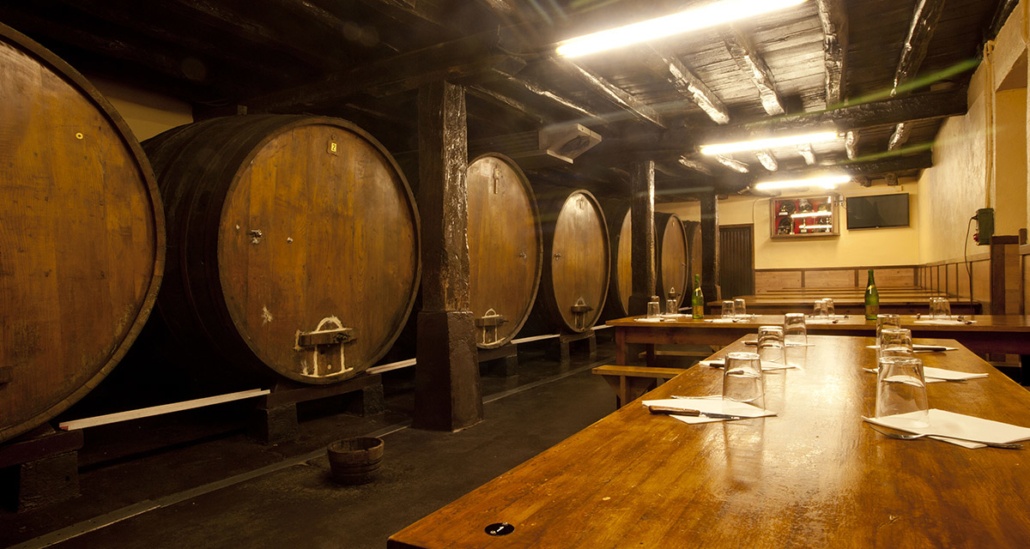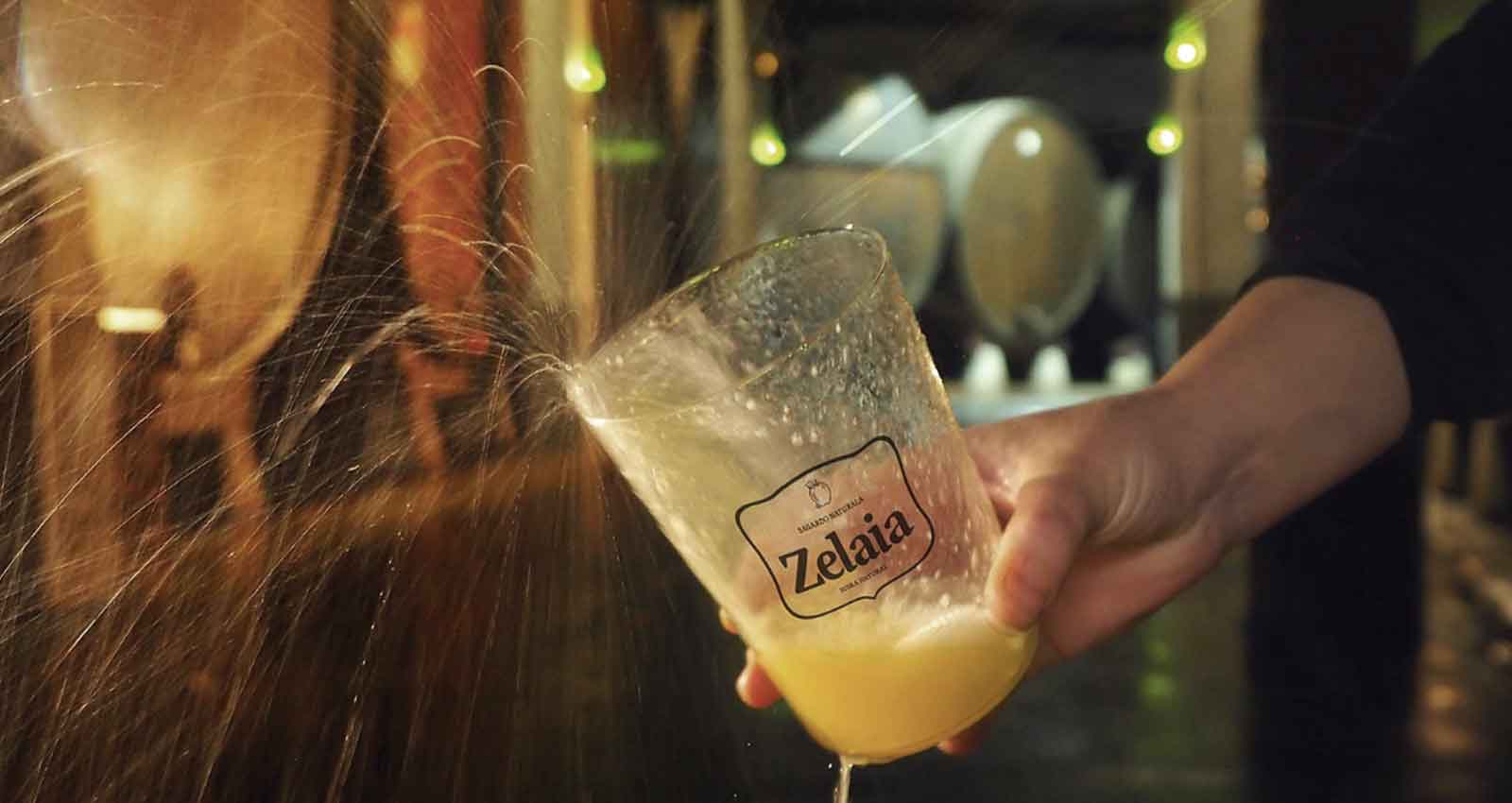10 January 2022 | Gastronomy
A practical guide to enjoy cider, txuletones and tortillas from January to June.
It has been made in our land for centuries and having one with our dearest and closest is a way of doing what we like most: enjoying life and food, friends and traditions.

Aritza, mozolua, txakala, goikoetxe... these are just some of the types of apples used to make cider. Each one of them has a different flavour and acidity, which is what gives personality to the different ciders on offer in the sagardotegis (cider bars). If you want to enter the world of cider, we offer you some basic information that you may find very useful.

The best time of the year to taste cider is from the beginning of the year to well into spring. You can go on a sagardotegia route and taste it served directly from the kupela (barrel). You might also experience a very special ritual: the txotx. If you hear someone suddenly shout this word (which refers to the tube that is inserted into the barrel), get up and approach the kupela from which the cider is coming out with your glass. Pay attention because the tap does not close and, as soon as the person in front of you has filled their glass, you should put yours down and try to avoid spilling the cider. When you've got about a third, stop and drink immediately, so that you can enjoy the full flavour of the cider.
Gipuzkoa is a seafaring region and it is here that you will find most of the sagardotegis. And why, you may ask... It turns out that in the 16th century, cider, as well as being a common drink for the population, was part of the wages of the Basque sailors who fished in the North Atlantic in search of cod and whales. Their contracts specified that each crew member on these ships should receive two or three litres of cider a day. This is how many farmhouses appeared, producing cider to satisfy the needs of the sailors. Gradually, in the cider houses where they went to taste and choose the cider they were going to take with them on their expeditions, food began to be served so that the tasting did not take place on an empty stomach. And by the 20th century, the sagardotegis began to set a menu that has become the traditional one: with cider from different kupelas, you can eat cod omelette, fried, roasted or pil pil cod (depending on the cider house), grilled txuleta, walnuts, cheese and quince jelly. You don’t even have to choose: the menu includes all the dishes.
The constellation of cider houses that dot the whole of Gipuzkoa is rich and varied. Most of the sagardotegis are far from the city centres and, although you will find some downtown establishments that imitate their decor and customs, they do not produce cider, they only serve it. For a real experience, visit some of the most popular ones (which are also the biggest producers), such as Saizar, Zapiain, Gurutzeta, Zelaia, Lizeaga, Petritegi and Barkaiztegi, the latter being very close to the centre of Donosti.
Let us mention a charming one: Urbitarte, in Ataun; an innovative one, Astarbe, in Astigarraga, which has started to make sparkling wine from cider. And finally, although a little further afield, Larre Gain, in Hernani, from where you can enjoy the absolutely beautiful scenery, in the heart of the mountains.
Although the pandemic protocols may have altered the cider house ritual a little, it's still worth getting to know them. At Zinema7 we can help you get to all the ones we've mentioned, and recommend a few more. You will enjoy one of the most exceptional experiences of your trip, but remember to decide beforehand who is driving on the way back!